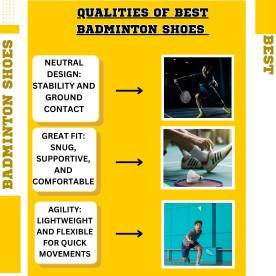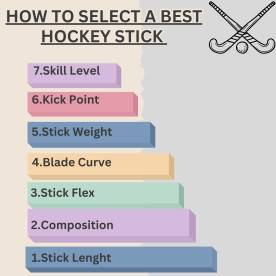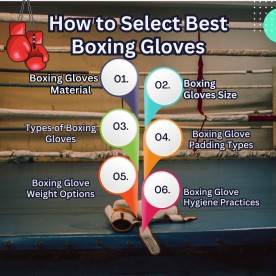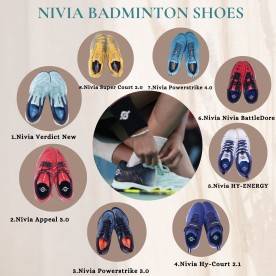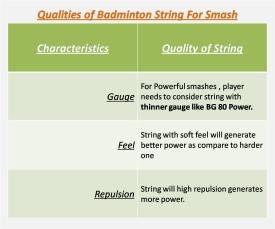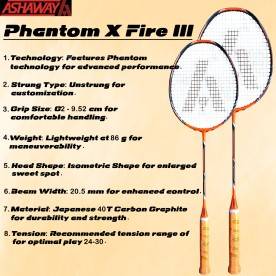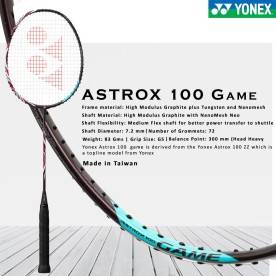In the dynamic landscape of modern badminton, the decision between indoor and outdoor play holds strategic significance. Opting for indoor courts confers undeniable advantages, offering superior playing conditions such as enhanced shuttle flight, stability, and accuracy. The controlled environment eliminates the unpredictable element of wind, ensuring a consistent game.
However, to fully optimise the indoor experience, players must adhere to guidelines set by court owners. A paramount requirement is the use of non-marking badminton shoes, and in this blog, we unravel the mystery behind non-marking soles, delving into their critical role in preserving the integrity of indoor badminton courts. Join us to understand why these shoes are indispensable, allowing players to leave their mark on the game with skillful shots, not scuff marks.
In badminton arenas, the prevailing trend is to have indoor courts with floors constructed from a delicate and soft court mat made of PVC material. This court mat provides badminton players with a distinct sensation of cushioning.
Checkout the Latest Non Marking Badminton shoes here
It is the players' responsibility to ensure the safety and security of the court mat by adhering to the established standards set by the court owners.
What do Non-Marking Badminton Shoes Signify?
Non-marking shoes are fashioned from a specialised 100% rubber material, featuring unique grips that leave no traces on the court floor. This material ensures excellent traction on indoor surfaces without leaving unsightly black streaks or marks. Designed specifically for indoor sports like badminton, these shoes go beyond regular athletic footwear. Their soles, crafted from materials that prevent scuff marks, cater to the specific movements and demands of badminton, such as quick lateral shifts, abrupt stops, and agile footwork.
Distinguished by their ability to preserve the integrity of indoor playing surfaces, especially wooden or synthetic floors commonly found in badminton courts, non-marking shoes stand as a testament to their commitment to performance and court maintenance.
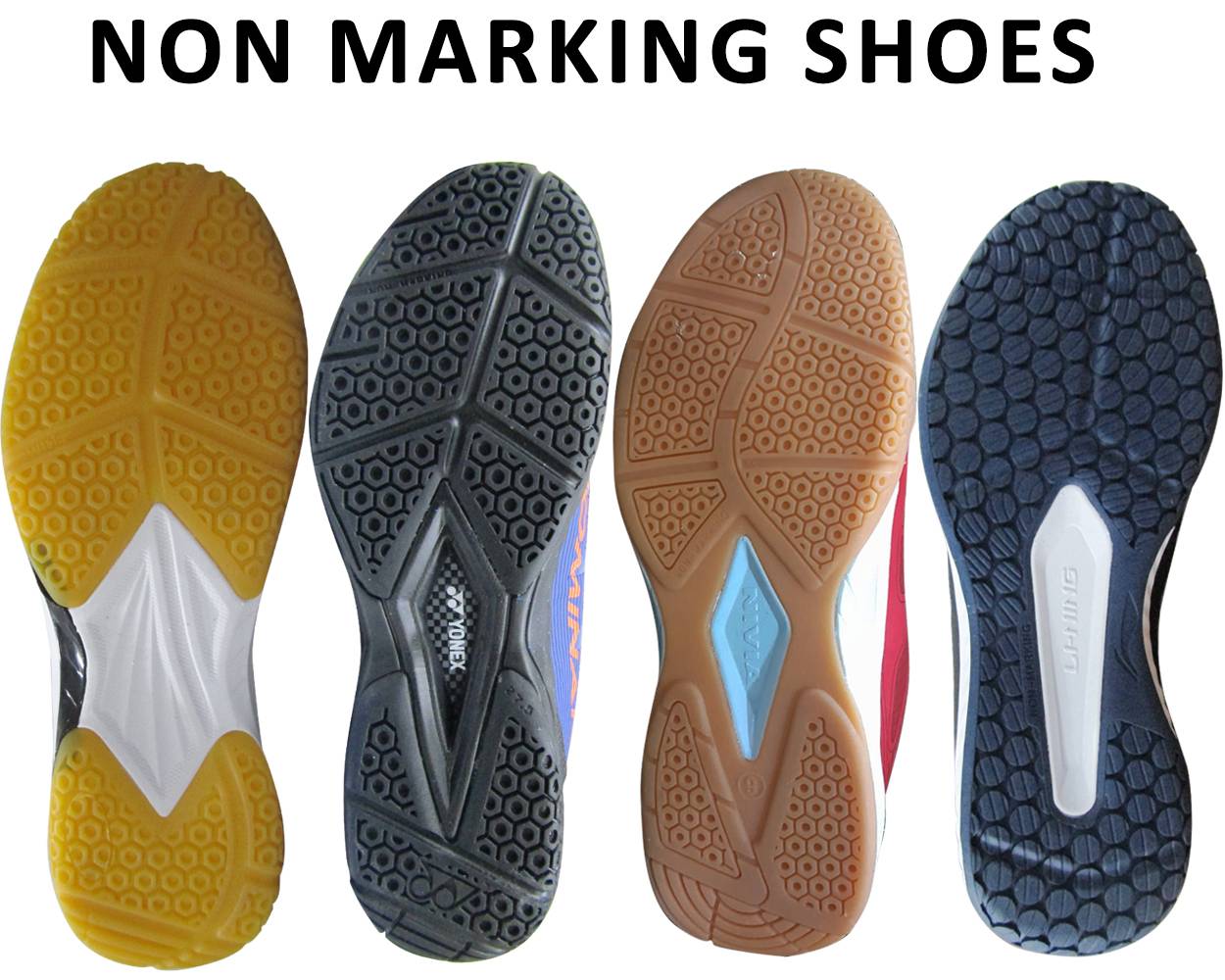
Why are Non-Marking Shoes Essential in Indoor Games?
Preserving the Court:
In the fast-paced game of badminton, players make quick, lateral movements, engaging in intense rallies that demand agility and precision. Non-marking soles, typically made of materials like gum or rubber, play a pivotal role in preventing scuff marks on the court. This not only preserves the aesthetics of the playing surface but also extends the life of the court.
A Symbiotic Relationship:
Imagine a court marred by unsightly marks, hindering the natural glide of the shuttlecock and disrupting the game's flow. Non-marking soles foster a symbiotic relationship between player and court, allowing for smooth, uninterrupted gameplay. They ensure that players can execute their moves without fear of damaging the court or compromising their performance.
Choosing Non-Marking Soles Wisely:
Material Matters:
The materials used in crafting non-marking soles are crucial. Gum rubber and specialised rubber compounds are common choices due to their ability to provide excellent traction without leaving marks. Explore the science behind these materials and understand how they contribute to a clean court.
Court-Friendly Designs:
Manufacturers design non-marking soles with the unique demands of badminton in mind. Dive into the specific patterns and features that make these soles court-friendly, providing the necessary grip for quick lateral movements while ensuring a mark-free playing surface.
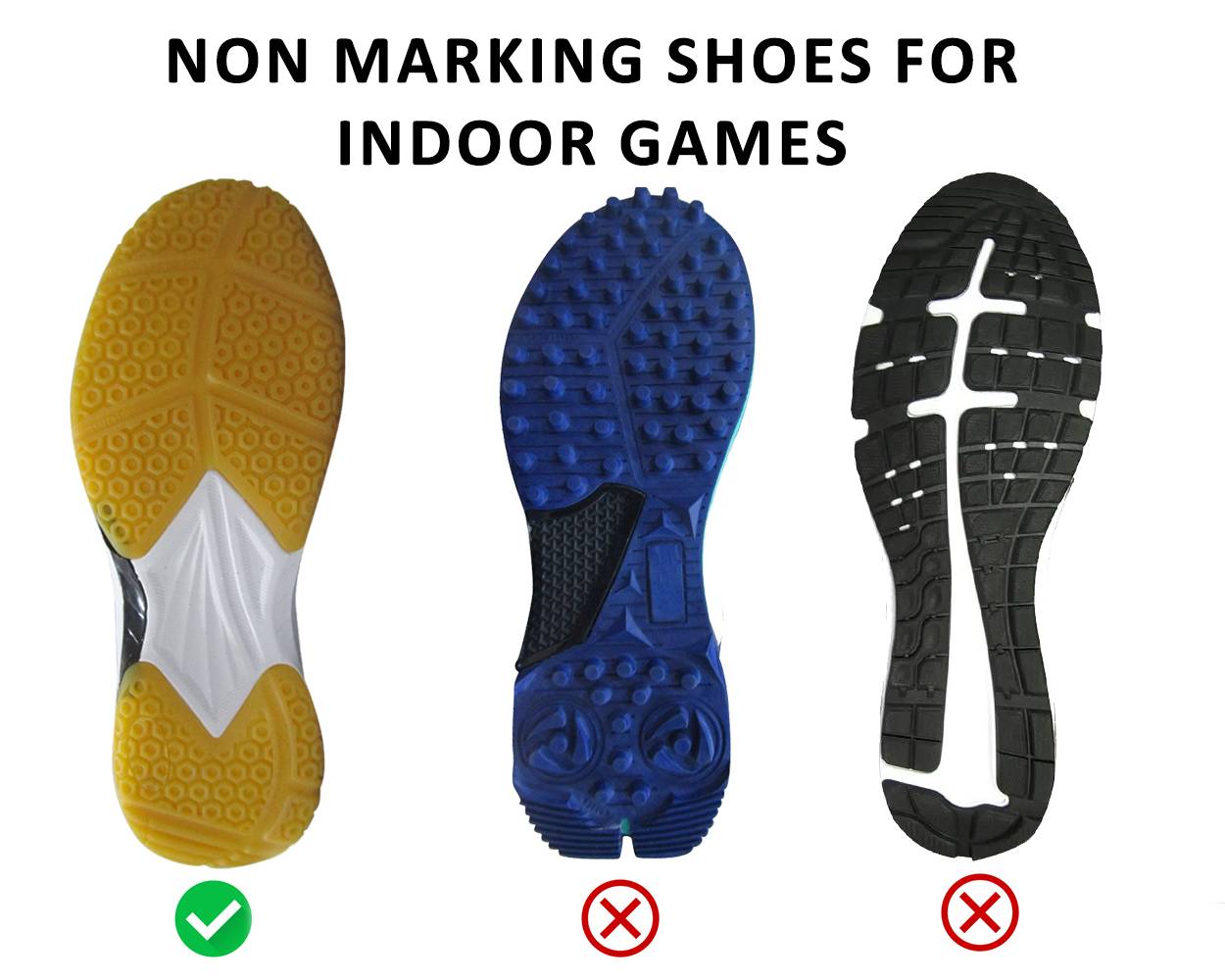
Beyond Court Preservation: Additional Benefits of Non-Marking Soles
Versatility of Use:
While designed with badminton courts in mind, non-marking soles are versatile enough for indoor sports across the board. Explore how these shoes can seamlessly transition from the badminton court to other indoor surfaces without leaving a trace.
Longevity and Durability:
Discover how the choice of non-marking soles contributes to the overall longevity and durability of badminton shoes. These soles not only protect the court but also ensure that the shoes themselves withstand the rigours of intense gameplay.
Is it suitable to utilise non-marking shoes for outdoor activities?
As previously mentioned, the soles of non-marking shoes are crafted from a special material designed for indoor courts made of court mats. If these shoes are used outdoors, it may damage the sole. Therefore, it is advisable to use them exclusively on indoor court mats.
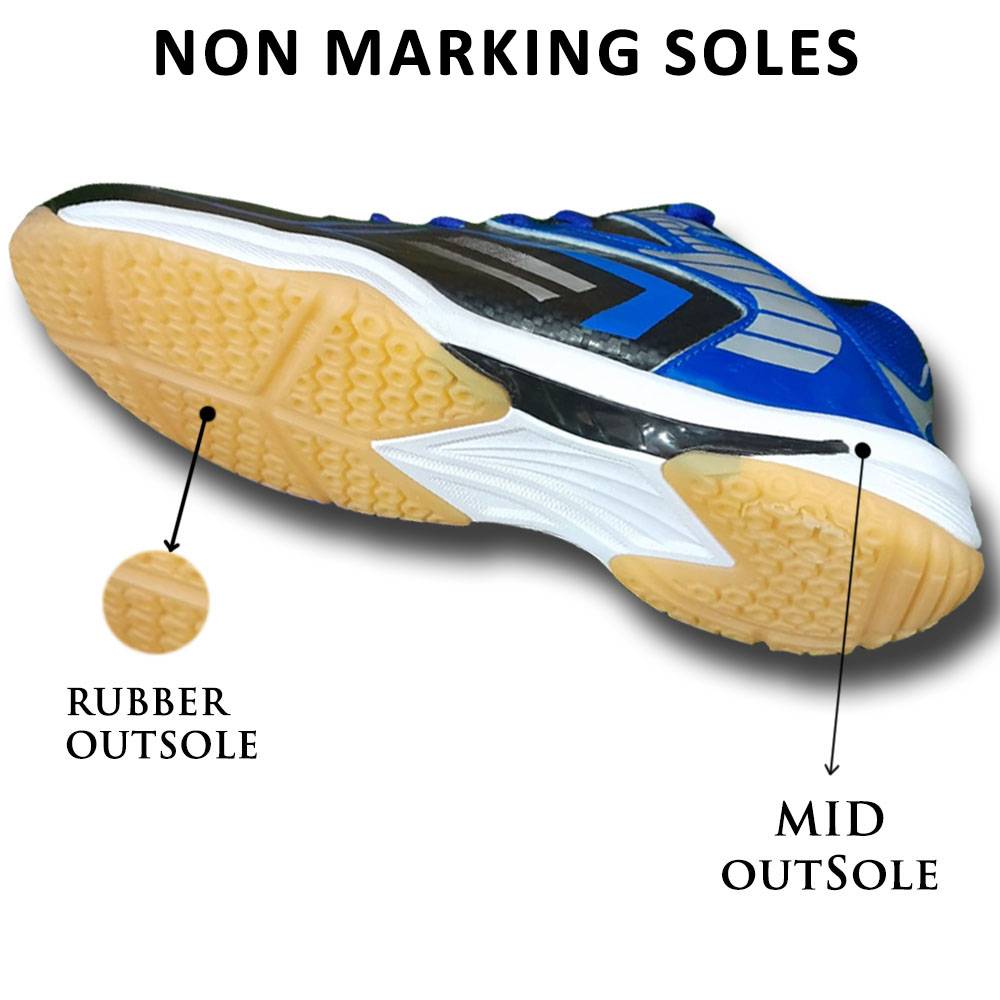
Conclusion: A Court-Friendly Footprint:
In the game of badminton, where precision and sportsmanship take centre stage, non-marking soles are not merely a feature; they are a commitment to the game and the playing environment. As players lace up their shoes, they can step onto the court with confidence, knowing that they will leave no trace behind—just the echoes of a game well played. So, the next time you're on the badminton court, remember the unsung heroes beneath your feet, preserving the canvas for countless rallies and smashes.
Explore the newest Non-Marking shoes to assist in safeguarding the court from damage and enhance your gaming experience. At khelmart.com, we provide a wide selection of Non-Marking badminton shoes, ranging from affordable options (Rs 800 to 1500) to professional-grade footwear (5000 to 9000 Rs). Our badminton shoes at khelmart.com boast high quality and undergo thorough 100% quality inspection before shipment.




